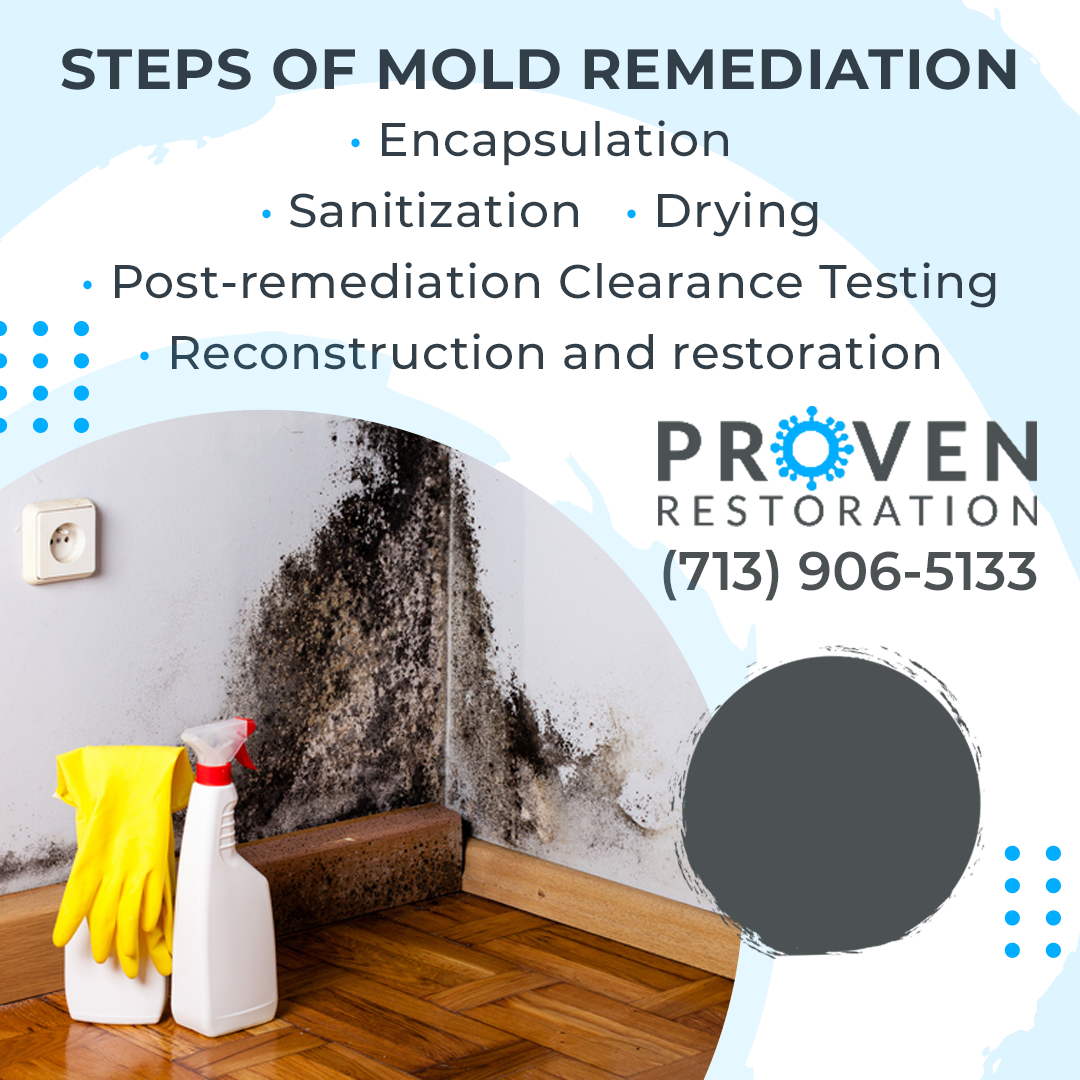Mold is a fungus that thrives in warm, damp areas. It takes just 24 to 48 hours for it to grow and colonize. As mold grows, it can cause property damage by consuming the organic materials it grows on and damaging other surrounding building materials and objects.
Mold can compromise indoor air quality and cause damage, ultimately affecting the structural integrity of a building. So, when mold is suspected or confirmed, initiate mold remediation as soon as possible. Proven Restoration LLC provides mold remediation in Spring, TX, and nearby areas. They can review the protocol issued by a Texas Certified Mold Assessment Consultant. As a state-licensed mold contractor, Proven Restoration LLC can issue a CDMR.
.png)
What is Mold Remediation?
Mold remediation helps get rid of mold to be brought to controllable levels. It also addresses the causes of mold growth to stop it from recurring. The term mold remediation refers to the process of eliminating harmful mold growth.
Steps of Mold Remediation
The steps involved in mold remediation include inspection and assessment, mold removal, containment, mold cleanup, and sanitization. The process may vary according to each mold infestation and the affected area. But some steps of mold remediation remain the same.
1. Inspection
The property is inspected meticulously for visible signs of mold. If necessary, have air samples tested to determine the type of mold. Testing air samples provide the spore count that indicates the level of contamination. A document called a "Protocol" is written, if necessary, which indicates the findings of the inspections and their recommendations to remediate mold.
2. Eliminate moisture
If there is a problem causing water damage and moisture, it must be fixed. It can be inadequate ventilation, leaking pipes, blocked gutters, etc. The moisture must be eliminated as efficiently as possible, or the mold will persist after remediation.
3. Removal of damaged objects
Any mold-infested materials and objects must be disposed of if beyond restoration. Porous items like carpets, drywalls, clothing, etc., might need to be disposed of according to local regulations. Non-porous objects like ceramic fittings, tiles, metals, etc., may be cleaned with biocides and industrial-grade antimicrobials.
4. Mold containment
The property or area that is affected by mold must be sealed or contained to prevent the spread of mold. Containment may be by sealing windows and doors. Openings may also be covered with plastic sheets for additional protection. Since spores are carried in the air, rooms may be sprayed to reduce the spread of particles that carry the spores.
Negative pressure may be created by installing HEPA (high-efficiency particulate air filtration) in an opening in the sealed area, which allows ventilation without mold or spores escaping to other areas.
5. Mold cleanup
Various methods are used for cleaning moldy areas. Detergent solutions may be used. Damp wiping and drying may be part of cleaning. Mold cleanup by professionals aims to remove the mold while limiting exposure. An EPA-approved biocide may be sprayed to sterilize spores. Special vacuums may also be used.
6. Encapsulation
A biocide requires time to work on eradicating spores. The area must be dried so that it can be whitewashed or painted. The paint or whitewash encapsulates any remaining spores. The encapsulation usually covers more area than that affected by mold.
7. Sanitization
After removing any plastic covering, the area is sanitized. Achieving an acceptable indoor air quality level is an important aim of mold remediation.
8. Drying
Professional mold remediation technicians use industrial-grade dryers, fans, and dehumidifiers to ensure moisture levels are not high to foster mold growth.
9. Post-remediation Clearance Testing
Professionals inspect the area again. They check the moisture and humidity levels and visual signs and test airborne spore samples from within and outside the remediated site. This testing will assess the effectiveness of the mold remediation process and will document the area's safety for reconstruction and occupation.
10. Reconstruction and restoration
Some areas require reconstruction, as mold-infested materials and items were disposed of. Plumbing, electrical wiring, drywall, and insulation may need to be repaired, and affected objects may need to be restored by professionals. A full-service water damage restoration and reconstruction contractor will help homeowners through all this.
.png)
Mold is a problem that must be prevented and, once detected, must be dealt with promptly. Proven Restoration LLC provides fast and reliable mold remediation in Spring, TX. Their experience spans two decades and has processes that follow industry and state regulations. For mold remediation in Spring, TX, call Proven Restoration LLC at (713) 906-5133 or email tracy@proven-re.com.
































